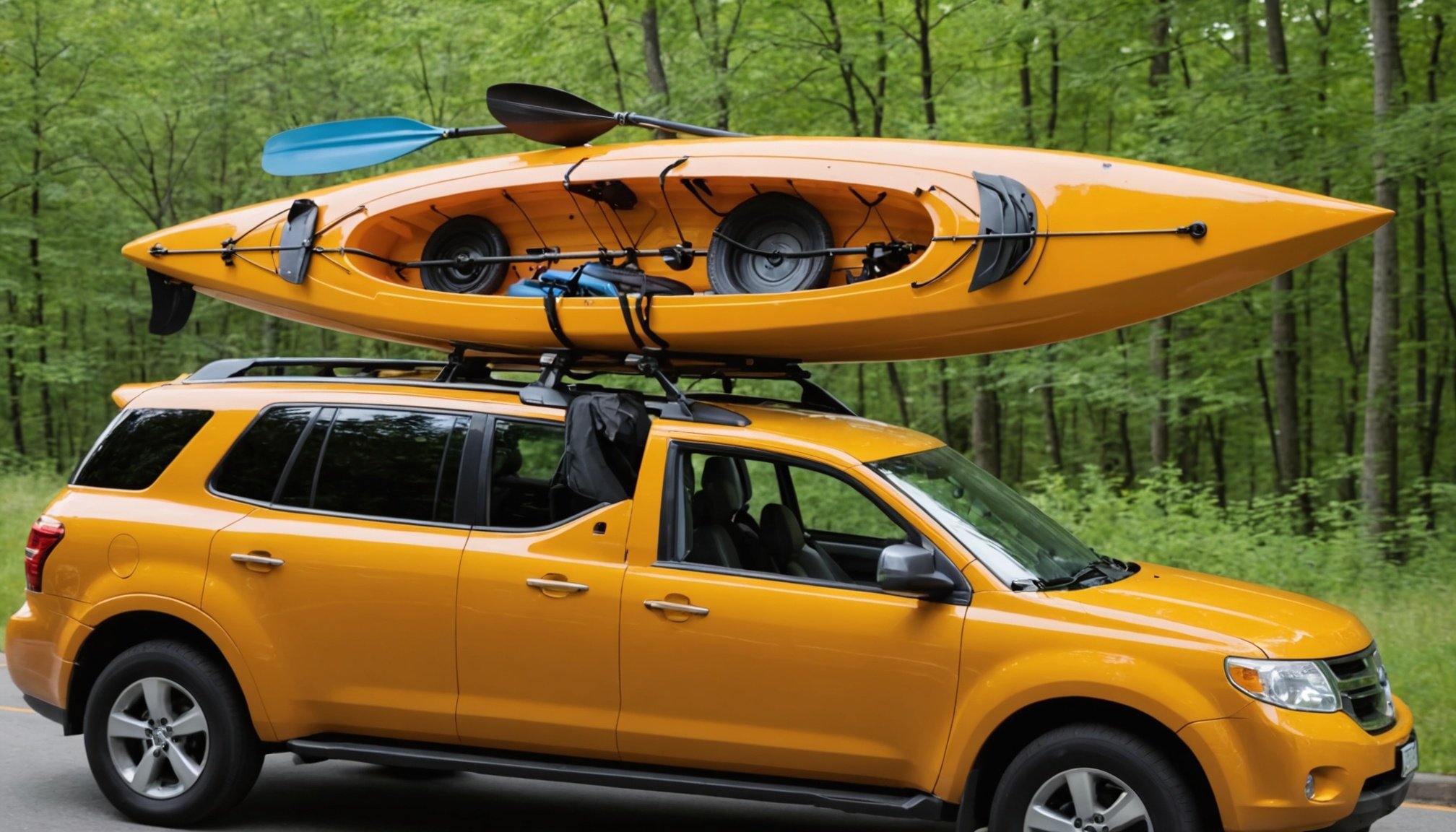Kayaking is an exciting and adventurous sport that allows you to explore the beauty of nature from a unique perspective. However, moving your kayak from one location to another can be a big challenge, especially if you’re using a sports utility vehicle (SUV).
Today, we will provide you with a comprehensive guide on how to secure your kayak on the roof of your SUV to ensure it doesn’t shift while driving. We will break down the process into five main sections: choosing the right rack and straps, positioning your vehicle and kayak, tying the bow and stern, securing the sides, and double-checking your work.
Also read : What is the correct way to handle a power steering failure while driving on a highway?
Choosing the Right Rack and Straps
Before you even begin to secure your kayak to your SUV, it’s crucial to choose the right rack and straps. Investing in a high-quality roof rack that’s designed for kayaks will significantly ease your work and ensure your boat is secure throughout the journey.
While there are numerous racks available in the market, choose one that fits your SUV perfectly. Make sure the rack is well-padded to prevent damage to your kayak or the roof of your vehicle.
In the same genre : What are the detailed steps to safely replace the serpentine belt in an SUV?
When it comes to kayak straps, opt for cam straps. They are preferred over ratchet straps due to their ease of use and the lower risk of over-tightening, which could damage your kayak. These straps should be long enough to go over, under, and around your kayak and roof rack.
Positioning Your Vehicle and Kayak
Once you have the proper rack and straps, the next step is to position your vehicle and kayak correctly. Place your SUV in a flat, open space to prevent it from rolling while you load the kayak.
Before lifting the kayak onto the roof rack, make sure it’s right side up, with the cockpit facing down. You should place the boat on the rack so that its bow is facing the front of your car. This positioning will reduce wind resistance while you’re driving.
Tying the Bow and Stern
Securing the bow and stern of your kayak is critical in preventing it from shifting while the vehicle is in motion. To do this, you’ll need to use straps and secure tie-down points on your SUV.
To secure the bow, attach one end of a strap to a secure point at the front of your vehicle, ideally under the bumper where metal tow hooks are often located. Then, pass the other end of the strap over the bow of your kayak and tighten it.
For the stern, repeat the same process, but attach the strap to a secure point at the back of your vehicle, usually near or under the rear bumper.
Securing the Sides
Besides the bow and stern, securing the sides of your kayak is also crucial to prevent lateral movement. You can achieve this by using the cam straps you’ve selected for this purpose.
Strap the kayak to the roof rack by passing a strap over the top of the kayak and under the roof rack on the other side. Make sure the strap goes over the widest part of the kayak, usually around the cockpit area.
Loop the strap back under the roof rack on the same side and pull it tight. Repeat this process on the other side of the kayak.
Double Checking Your Work
Lastly, after you’ve secured the kayak, it’s important to double-check your work. Shake the kayak gently to see if it shifts or moves. If it does, you may need to tighten the straps or adjust their positioning. Additionally, check all knots and buckle closures to ensure they are secure and will not loosen during transport.
Remember to re-check the kayak after every few miles during your journey, especially if you’re travelling a long distance.
Securing a kayak on the roof of an SUV can be a simple process if done correctly. Follow these steps, and you’ll ensure your kayak stays in place and arrives safely at your next adventure destination.
Safety Precautions While Transporting a Kayak
Safety is paramount while transporting a kayak on the roof of your SUV. It’s not just about ensuring the kayak doesn’t shift while driving, but also about guaranteeing the safety of other road users.
When choosing a roof rack, ensure it is designed specifically for kayaks. Some racks are designed for general use and may not provide the stability your kayak needs while on the move. The kayak rack should have foam blocks or pads to protect your kayak from scratches and dents.
Check and study the mounting instructions for the roof rack carefully. It should be securely fastened to the roof of your SUV and not wobble or tilt in any way. The same goes for your kayak roof mount. It should be firmly anchored to the roof rack.
It’s also crucial to consider the weight of your kayak in relation to the maximum load your SUV’s roof can handle. Overloading can lead to roof damage or even cause the roof rack to detach while driving.
Use the right cam straps to tie the kayak to the roof rack. They should be strong, durable, and capable of withstanding the weight and shape of your kayak. They should also be tied properly to avoid loosening while driving.
Attach bow stern lines to provide extra security. The bow stern lines are attached to the front and rear of the kayak and then to the vehicle, preventing the kayak from shifting sideways or sliding off the roof rack.
Avoid driving at high speeds when transporting a kayak. The higher the speed, the higher the wind resistance, which can cause the kayak to shift or even fly off the roof car.
Lastly, remember to check local laws and regulations regarding the transportation of goods on the roof of a vehicle. Some jurisdictions may have restrictions on the size, weight, or type of items that can be transported on a vehicle’s roof.
Conclusion: Journeying with a Secure Kayak
Securing a kayak on the roof vehicle is a critical task every kayaker should master. It ensures the safe transportation of the kayak from your home to the river, lake, or the sea. With the right roof racks, cam straps, and proper knowledge of tying the kayak, you can transport your kayak securely and safely.
Whether you’re using foam blocks, tie-downs, or a specially designed kayak rack, always remember that the main goal is to prevent the kayak from shifting while driving. Also, remember to regularly check and tighten the straps, especially during long-distance travel.
In conclusion, transporting a kayak doesn’t have to be a daunting task. With careful planning and adherence to safety measures, you can secure your kayak to your SUV and get it to your destination without any mishap. So, gear up, secure your kayak, and set off for your next kayaking adventure with peace of mind.













